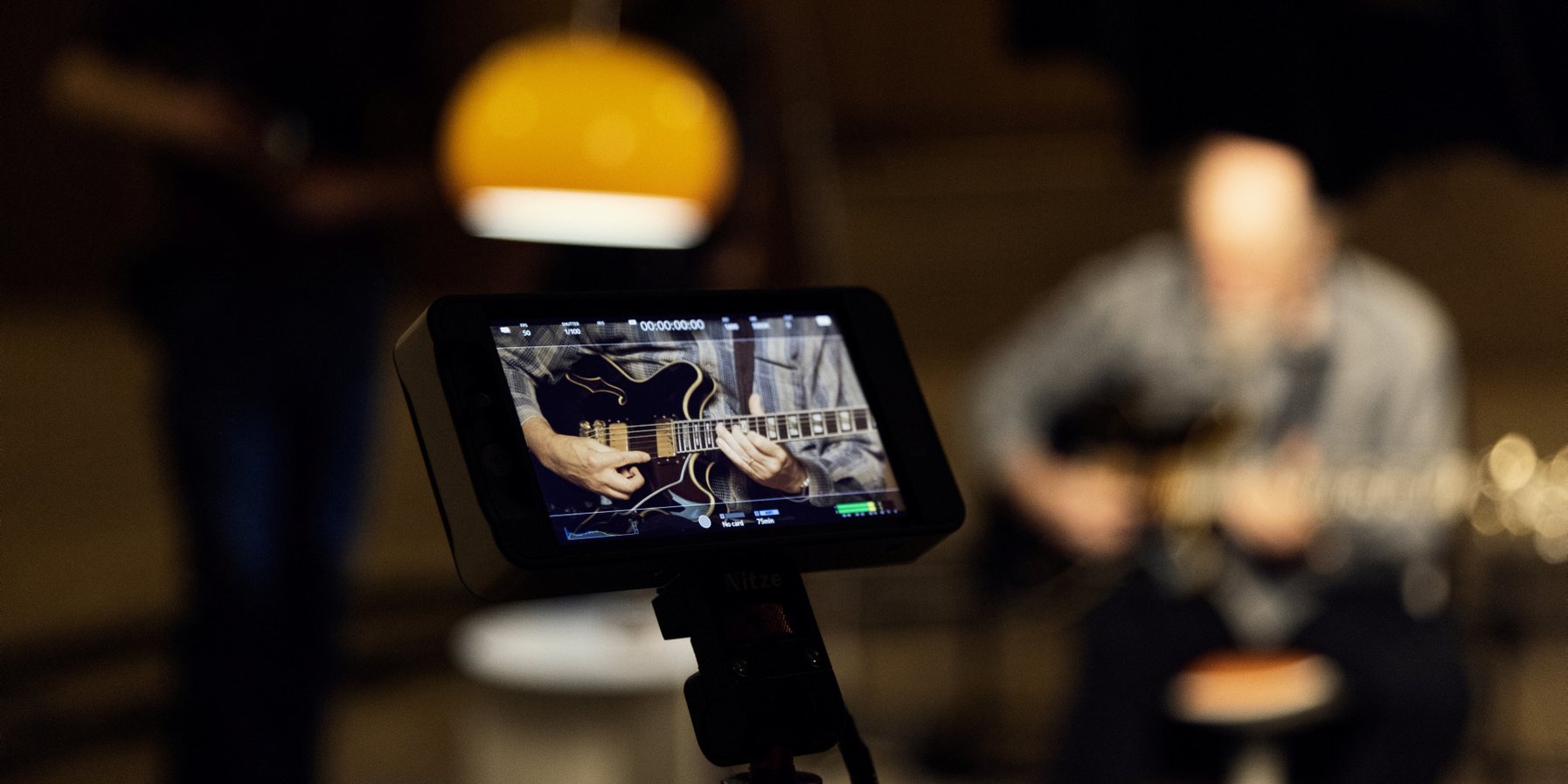His distinctive, slightly strained sound singles him out, and his versatile playing combines influences from post-bop, funk and R&B: American guitarist John Scofield is one of the icons of jazz. For decades, the US-American has performed worldwide in a great variety of formations – but almost never alone. Scofield has now recorded a solo programme exclusively for his Elbphilharmonie Session.
»I have played with bands my whole life. That was the reason I started to play the guitar. Solo guitar is really hard, you have to go through all kinds of leaps and bounds and technical stuff. But then they invented a sampler pedal, with which I can make little accompaniments on the fly. That has allowed me to do a whole concert – being able to play with myself.«
John Scofield
Interview with John Scofield
The Artist
Born in Ohio in 1951, Scofield grew up in Connecticut and discovered the guitar at the age of 11. It was partly Jimi Hendrix that brought him to jazz: »I realised that I was never going to be better than Hendrix,« he remembers. So Scofield decided to go his own way. He got to know the music of Wes Montgomery, Jim Hall and Pat Martino through his guitar teacher and fell under the spell of jazz, which he has remained faithful to ever since. He went on to attend the prestigious Berklee College of Music in Boston, where he studied with leading jazzmen like the vibraphonist Gary Burton; a few years later, he joined Burton’s quartet.
As a bandleader too, Scofield’s career took off in the late 70s. In 1982 he came into the limelight as a guitarist and composer and spent three years on tour with Miles Davis, with whom he also made several records. In the meantime Scofield has released dozens of acclaimed albums under his own name, working together with many major jazz musicians such as guitarist Bill Frisell and the pianists Herbie Hancock and Brad Mehldau.
Die Setlist
John Scofield
Little Walk
Mrs. Scofield
Jimmy Webb / Pharoah Sanders
Wichita Lineman / The Creator has a Masterplan
Ballard MacDonald & James F. Hanley
(Back Home again in) Indiana
»John Scofield’s modest guitar style, free of any airs and graces, has made him a much-liked musician and opened many doors to him, both in jazz and in other genres.«
Wolfgang Sandner, FAZ
The Music
Scofield wrote »Little Walk« in the early 90s for his acclaimed quartet with the saxophonist Joe Lovano, drummer Bill Stewart and Dennis Irwin on bass. The track found its way on to the studio album »What We Do« (1993), which moves freely between mainstream, free jazz, blues, rock und country. Another composition from his pen is »Mrs. Scofield’s Waltz«, a gentle piece that John Scofield dedicated to his wife.
»Jazz leaves you the freedom to develop your own style. Jazz encourages you to sound like yourself.«
John Scofield
Rolling Stone magazine voted »Wichita Lineman« (1968) one of the »500 Greatest Songs of All Time«. Songwriter Jimmy Webb describes a simple telephone lineman in Kansas who spends his solitary working day atop phone masts and misses his girlfriend. Originally written for country singer Glen Campbell, it was subsequently recorded by countless artists, from Johnny Cash to R.E.M.
The music flows smoothly into the next track, »The Creator has a Master Plan«, borrowed from rebel sax player Pharoah Sanders. The American jazzman was one of the pioneers of so-called »spiritual jazz« (aka: deep jazz), a style focusing on spiritual and also political themes which had its climax in the 1960s and 70s with other major figures like John Coltrane und Gary Bartz. »The Creator has a Master Plan« is one of the movement’s hymns. Released in 1969, it repeats for some 30 minutes a simple but brilliant theme with distinctive trills like a kind of mantra. The Creator’s »master plan« is »Peace and happiness for every man«, making it heavily influenced by John Coltrane’s famous album »A Love Supreme« that came out five years earlier; Sanders recorded numerous albums with the Coltrane band.
John Scofield brings his session to an end with »(Back Home again in) Indiana«. The song dates from 1917 and is the unofficial anthem of the state of Indiana. It was later taken up by many jazz musicians, among them Louis Armstrong, who used to open his concerts with this standard piece.
About the series
Artists record exclusive music videos at the Elbphilharmonie and the Laeiszhalle for Elbphilharmonie Sessions – sometimes in unusual locations offstage. Discover the concert halls from the inside. Discover what they sound like.




















